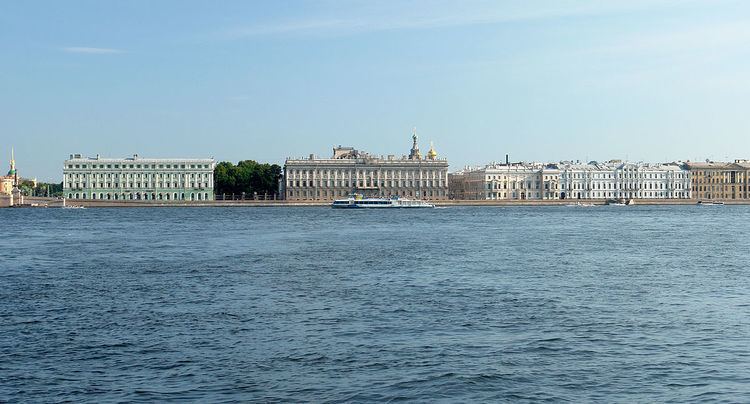 | ||
Similar Hermitage Theatre, Winter Palace, Old Saint Petersburg Stock Exc, Palace Bridge, Palace Square | ||
The Palace Embankment or Palace Quay (Russian: Дворцовая набережная, Dvortsovaya Naberezhnaya) is a street along the Neva River in Central Saint Petersburg which contains the complex of the Hermitage Museum buildings (including the Winter Palace), the Hermitage Theatre, the Marble Palace, the Vladimir Palace, the New Michael Palace, the Saltykov Mansion and the Summer Garden.
Contents
- Map of Dvortsovaya naberezhnaya Sankt Peterburg Russia
- Palace embankment
- Pushkin associations
- References
Map of Dvortsovaya naberezhnaya, Sankt-Peterburg, Russia
The street was laid out between 1763 and 1767, when it used to be a preferred place of residence for the Russian Imperial Nobility. The street begins at the Palace Bridge, where the Admiralty Embankment becomes the Palace Embankment, and the street ends at the Fontanka, where it becomes the Kutuzov Embankment.
The Palace Embankment is a very popular street among tourists, as it has a wonderful view of the Neva, the Peter and Paul Fortress and Vasilievsky Island. Many sightseeing boats are available for hire there.
Palace embankment
Pushkin associations
In his novel Eugene Onegin, Alexander Pushkin depicted himself walking along Palace Quay with his hero, Eugene Onegin:
For the first edition of this chapter, the poet commissioned an illustration depicting him and Onegin walking together along the quay. Upon receiving the illustration, which represented him leaning on a parapet with his back turned towards the Peter and Paul Fortress, he was exceedingly displeased with the result (which had little in common with his own preliminary sketch, illustrated to the right) and scribbled the following epigram underneath:
(translated by Vladimir Nabokov)
